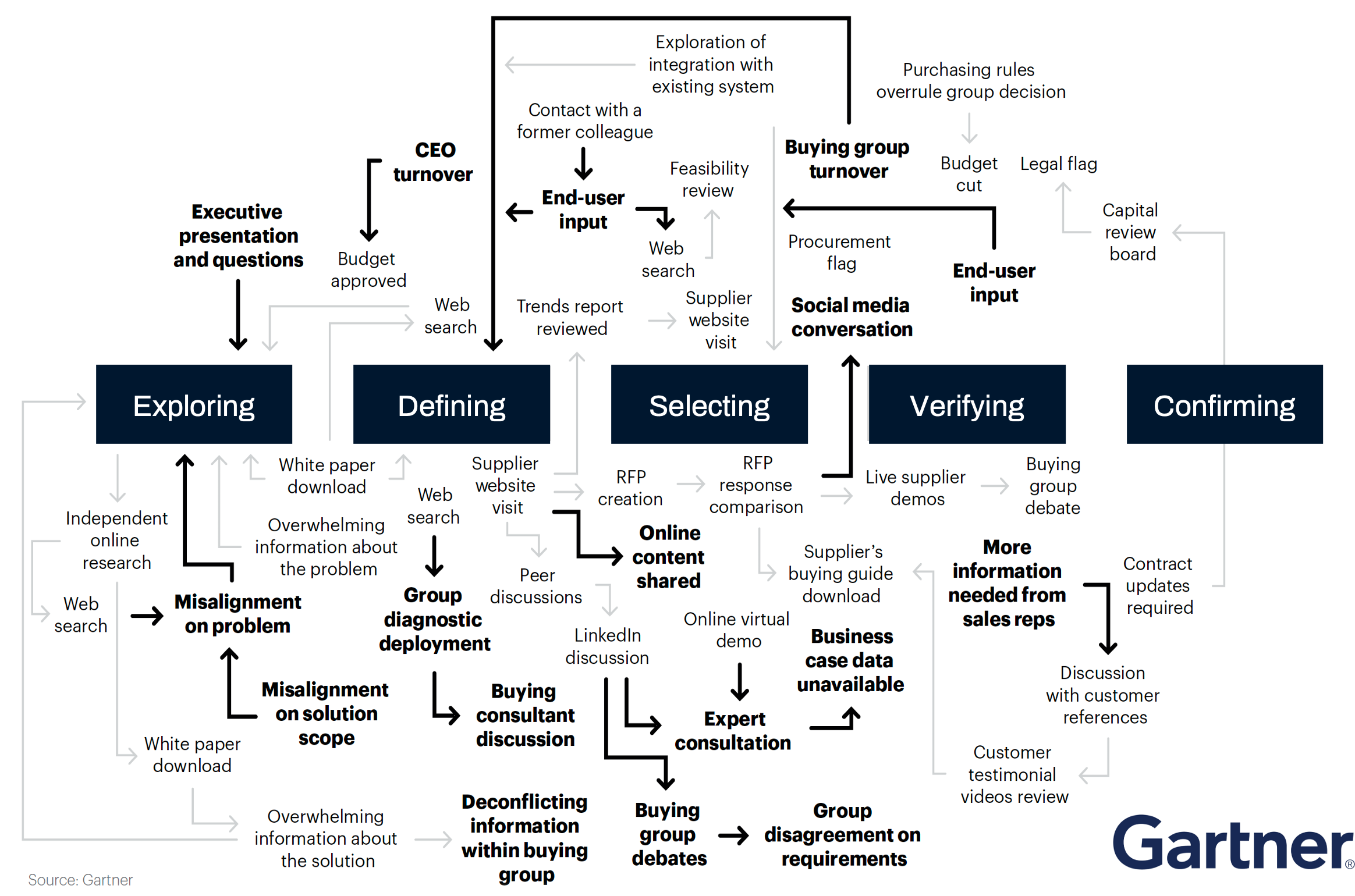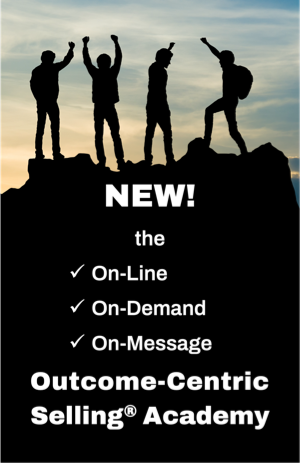What’s more important: our Sales Process, or our Customer’s Buying Journey?
January 8, 2025

This article was originally published in the January 2025 edition of Top Sales Magazine (link below).
 Traditional wisdom suggests that following a well-defined sales process can significantly improve both individual and organisational sales performance. The evidence certainly suggests that this approach can be effective in relatively simple, high-volume, predictable and repeatable sales environments.
Traditional wisdom suggests that following a well-defined sales process can significantly improve both individual and organisational sales performance. The evidence certainly suggests that this approach can be effective in relatively simple, high-volume, predictable and repeatable sales environments.
But there’s an issue: too many “sales processes” consist of a pre-defined, linear series of steps that a salesperson is expected to follow, often with little regard for where the prospective customer is in their own buying decision journey. These steps are then translated into pipeline stages and used to forecast sales outcomes.
Unfortunately, in more complex B2B buying environments involving discretionary purchases, multiple stakeholders, and lengthy and sometimes unfamiliar buying decision journeys, this assumption of linearity and the focus on seller actions rather than buyer behaviours becomes increasingly unhelpful.
The B2B buying “spaghetti bowl”
A few years back, Gartner visualised the actual dynamics of these complex buying environments in what they labelled as a long, hard slog - and came to be known as the B2B buying “spaghetti bowl”. They revealed that the typical buying journey is far from linear. At any phase along the way, our prospective customer can move forwards, backwards, go around in circles or abandon the journey altogether.

It is almost inevitable in these lengthy multi-month or (sometimes) multi-year buying journeys that changing internal or external circumstances will cause the prospective customer to revisit at least one phase at least once - and behave in non-linear ways far more often than that.
In such circumstances, over-prescriptive, always-do-this-and then-do-that, never-go-backwards sales processes are at best unhelpful and more often than not are actually damaging our chances of sales success. And they make it very hard to predict which deals will actually close when.
So how can we avoid this mismatch between what we define as our sales process and each prospective customer’s actual buying decision journey?
Buying phases, not sales stages
We need to start by acknowledging that if we don’t know where our prospective customer actually is right now in their buying decision journey, then our chances of navigating to a successful outcome for both parties are inevitably much diminished.
That implies that the way in which we track and manage our sales opportunities must be based on the key phases in a typical buying decision journey. Now, the details of these phases may vary from one market environment to another, but broadly speaking, most buying journeys will pass through each of these phases at least once:
- Status Quo: they appear to be satisfied with their current situation and are not thinking of changing
- Then something significant changes - a Trigger Event - this is a pivotal moment
- Concerned: they have become concerned about their situation
- Exploring: they are actively investigating the situation, the implications, and their options
- Defining: they are defining what they need, which options to shortlist, and how to decide between them
- Selecting: they are evaluating their shortlisted options and trying to agree on a single preferred option
- Verifying: they are trying to confirm that they have made the best possible choice
- Confirming: the project is being submitted for final approval
- Implementing: they are implementing their chosen solution
- Outcome Achieved: they have achieved their desired outcome, and the project is recognized as a success
Within each of these phases, the customer has a series of jobs to be done - and the belated recognition that one or a number of these tasks have been missed or remain uncompleted is one of the main reasons why buying journeys stall or go backwards.
Of course, running an effective sales process requires an understanding of the prospect’s most important jobs-to-be-done (and their current status), but it also includes a series of tasks that a salesperson needs to complete in order to qualify the opportunity, advance it to the next phase and - ultimately - reach a successful conclusion.
Implications for sellers
This customer-centric perspective has a number of implications: Firstly, salespeople must be able to diagnose the current phase of their prospect’s buying decision journey and the status of their jobs-to-be-done; Second, salespeople must have a clear idea of what they need to know and do during each phase to advance and qualify the opportunity; Third, if a salesperson “arrives late” in a deal, they may need to persuade the prospect to revisit or rethink some of their previous decisions or actions - because in many situations these may be unfavourable.
But perhaps most important of all, we need to recognise that our prospect - particularly if they are straying into unfamiliar territory - may not have a completely clear idea of how best to manage their own buying decision journey. This gives smart salespeople an incredibly valuable opportunity to educate the prospect into the nature of the issue they are wrestling with, the key considerations and implications involved, and how their prospect can make the most effective buying decision - one that maximises the chances that they will successfully achieve their desired outcomes.
Is this harder for salespeople to get their heads around than following a traditional linear sales process? Yes - but you’ll find that the smarter salespeople and sales organisations are already thinking this way. If you’re not yet doing this, perhaps you should be, too.
Subscribe to Top Sales Magazine: http://bit.ly/35uAeuR


Comments